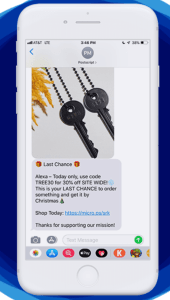Technology
IndiaVikram lander was very near making its proud creators the fourth country in history to touch down on the Moon — but it was not to be, and the craft was lost. Now India has a bit of closure: The remains of the lander have been located on the Moonsurface.
After the accident, the United States& Lunar Reconnaissance Orbiter made a pass over the intended landing zone and snapped some pictures. Shanmuga Subramanian, an engineer in Channai, India, was poring over them when he noticed what appeared to be the marks of debris.

&Using the data I calculated and from ISRO live telemetry data, I deduced that it might be something like [2-2.5 kilometers around] the landing site,& Subramanian told India Today. He spent hours every day looking over imagery of the area. &I did find a small white little dot which was something different from the surroundings. When I compared with old images from 2010, I found this was not there, so I thought, it has to be a piece of the lander.&
He emailed his findings to NASA, which got back to him a short while later confirming what he had found. ISRO had originally said the lander impacted 500 meters from its intended landing site, and the actual point was some 750 meters to the northwest.

Closer inspection by experts revealed the impact site itself, as well as a number of pieces of debris and the trails they left in the lunar soil as they tumbled.
Itlittle comfort for ISRO and the agencysupporters to see the parts of their cherished spacecraft scattered across the surface of the Moon, but ita visceral reminder of how incredibly close they got to making that mission a success, and how proud the country can be of that accomplishment.
- Details
- Category: Technology
Read more: The remains of India’s first lunar lander have been found on the Moon
Write comment (90 Comments)Just as Qualcomm was starting to highlight its 5G plans for the coming years, Verizon CEO Hans Vestberg hit the stage at AWS re:Invent to discuss the carrierteam up with the cloud computing giant.
As part of Verizon(TechCrunchparent company, disclosure, disclosure, disclosure) upcoming focus on 5G edge computing, the carrier will be the first to use the newly announced AWS Wavelength. The platform is designed to let developers build super-low-latency apps for 5G devices.
Currently, itbeing piloted in Chicago with a handful of high-profile partners, including the NFL and Bethesda, the game developer behind Fallout and Elder Scrolls. No details yet on those specific applications (though remote gaming and live streaming seem like the obvious ones), but potential future uses include things like smart cars, IoT devices, AR/VR — you know, the sorts of things people cite when discussing 5Glife beyond the smartphone.
&AWS Wavelength provides the same AWS environment — APIs, management console and tools — that they&re using today at the edge of the 5G network,& AWS CEO Andy Jassy said onstage. Starting with Verizon5G network locations in the U.S., customers will be able to deploy the latency-sensitive portions of an application at the edge to provide single-digit millisecond latency to mobile and connected devices.&
As VerizonCEO joined Vestberg onstage, CNO Nicki Palmer joined Qualcomm in Hawaii to discuss the carriermmwave approach to the next-gen wireless. The technology has raised some questions around its coverage area. Verizon has addressed this to some degree with partnerships with third-parties like Boingo.
The company plans to have coverage in 30 U.S. cities by end of year. That number is currently at 18.

- Details
- Category: Technology
Read more: Verizon and AWS announce 5G Edge computing partnership
Write comment (93 Comments)Today at AWS re:Invent in Las Vegas, the company announced a new search tool called Kendra, which provides natural language search across a variety of content repositories using machine learning.
Matt Wood, AWS VP of artificial intelligence, said the new search tool uses machine learning, but doesn&t actually require machine learning expertise of any kind. Amazon is taking care of that for customers under the hood.
You start by identifying your content repositories. This could be anything from an S3 storage repository to OneDrive to Salesforce — anywhere you store content. You can use pre-built connectors from AWS, provide your credentials and connect to all of these different tools.
Kendra then builds an index based on the content it finds in the connected repositories, and users can begin to interact with the search tool using natural language queries. The tool understands concepts like time, so if the question is something like &When is the IT Help Desk is open,& the search engine understands that this is about time, checks the index and delivers the right information to the user.
The beauty of this search tool is not only that it uses machine learning, but based on simple feedback from a user, like a smiley face or sad face emoji, it can learn which answers are good and which ones require improvement, and it does this automatically for the search team.
Once you have it set up, you can drop the search on your company intranet or you can use it internally inside an application and it behaves as you would expect a search tool to do, with features like type ahead.

- Details
- Category: Technology
Read more: AWS announces new enterprise search tool powered by machine learning
Write comment (93 Comments)Back in February, we wrote that Postscript &wants to be the Mailchimp for SMS.& Now they&ve raised $4.5 million to help get it done.
This round was led by Accomplice, and backed by Kayak co-founder Paul English, Wufoo co-founder Kevin Hale, Klaviyo co-founder Andrew Bialecki, Drift co-founder Elias Torres, Front co-founder Mathilde Collin and Podium co-founders Eric Rea and Dennis Steele. The Postscript team is currently made up of 14 people.
Postscript is meant to help e-commerce companies — specifically Shopify shops, currently — connect with their existing customers over SMS. Their Shopify plugin lets store owners run SMS marketing campaigns with customers who&ve opted in, have two-way conversations with users who respond and analyze the data to figure out whatworking.

Got a new product hitting the shelves and want to let your most frequent customers know first? Plug the message into Postscript dashboard, tell it what segment of your customer base you want to receive it and send away. Their analytics backend will tell you how many people received it, how many actually clicked through and how much revenue you pulled in from those clicks.
If a customer types out a text and responds, it&ll pop up in the backend like a support ticket. Shop owners and employees can respond and have direct conversations, answer questions and close out the ticket through the dashboard — or they can automatically pipe them into services like Zendesk or Zapier.
But what about spam? Our text message inboxes tend to feel like the last refuge from the overwhelming onslaught of marketing messages that have ruined e-mail; do we really want shops pinging our phones directly every time they&ve got a new pair of pants?
It seems like Postscript is pretty mindful of this, and is building things in a way that limits just how &spammy& anyone on the platform can be — partly because (as we&ve seen with e-mail) flooding users with unwanted messages ensures that messages just don&t get opened, and partly because SMS is much more tightly regulated than many other messaging protocols. Under the Telephone Consumer Protection Act (TCPA) in the U.S., for example, SMSing marketing messages to someone without an explicit opt-in can get the company nailed with fines of thousands of dollars per text.
As Lucas Matney wrote in February:
The opt-in process for phone communications is already a bit more codified in the U.S., and as companies attempt to stay in the good graces of GDPR for fear of the EU god, it might be more likely they tread carefully.
As such, everything is opt-in, and easily opted out of if a user changes their mind. It also helps, of course, that sending SMS isn&t free for the companies. Each SMS you send to a customer who doesn&t care is money wasted — so thereinterest on all sides on limiting messages to just the folks who actually want them.
Postscript pricing varies depending on how many messages a shop is looking to send each month. Paid plans start at $50 a month for 1,500 SMS, climbing up to $2,000 per month for 83,000 messages — after that, they ask shops to reach out for a custom plan. Postscript co-founder Alex Beller tells me the company currently has around 530 paying customers, each spending anything from $50 per month to &the mid five figures.&
- Details
- Category: Technology
Read more: Postscript raises $4.5M to help Shopify shops stay connected with customers over SMS
Write comment (95 Comments)
Three months after Goldman Sachs lent $100 million to Mexican fintech Konfio, SoftBank has invested another $100 million into the financial services company. The investment confirms Reuters& August report that SoftBank was in advanced talks with the startup — now one of the most heavily funded fintechs in Mexico.
SoftBank is continuing to expand its Mexican portfolio, which now includes used car buying platform Kavak andpayments startup Clip. Aside from Mexico, SoftBank has primarily focused its $5 billion Latin America fund on Brazil — and recently marked its entry into Argentina with an injection into financial services company Uala in a $150 million investment co-led by Tencent.
As traditional banks shy away from small to medium-sized business loans in Mexico, Konfio credit underwriting service provides a faster alternative. Konfio uses a data-first approach to enable fast credit assessment for SMBs looking to grow their businesses. The service can disburse credit in a one-day turnaround, as opposed to locking users into a traditional months-long approval process that can often require collateral.
Meanwhile, if you&re a startup gathering massive amounts of data on Latin Americagrowing middle class, SoftBank might be interested in your growth funding. The Japanese conglomerate seems to want to know everything it can about Latin Americaconsumer spending habits, mobile usage and personal banking user behavior.
Watch Konfio founder and CEO David Aranapanel at TechCrunchSão Paulo event here.
- Details
- Category: Technology
Read more: SoftBank pours $100M into Mexico’s Konfio
Write comment (97 Comments)
When the storied venture firm Sequoia likes a deal, it will sometimes not only lead one of its financing rounds but fund it exclusively — no matter how that impacts earlier investors. Given the firmpowerful brand, ithard to complain (too much), even if it means that earlier backers see their stakes diluted.
Such looks to be the case with Dolls Kill, an eight-year-old, San Francisco-based online boutique for &misfits& and &miss legits,& that began selling platform shoes and other club-type clothing and has apparently grown like a weed, alongside the festivals that its customers attend, from Burning Man to Coachella.
The company has just raised $40 million in Series B funding from Sequoia, and when we talked yesterday with co-founder and CEO Bobby Farahi about the deal — which brings Dolls Kill funding to roughly $60 million — he said there was &no room& for earlier backers, including the consumer-focused venture firm Maveron.
He quickly added that the companyboard members — specifically Maveron partner Jason Stoffer, along with former Hot Topic CEO Betsy McLaughlin — have been instrumental in helping the company &think through growth while maintaining authenticity.&
Iteasy to appreciate enthusiasm around the brand, which employs around 400 people, has retail stores in both San Francisco and LA and sells its own clothes under an array of different labels, as well as sells the apparel of third parties whose aesthetic happens to fit that of Dolls Kill at any particular moment in time.
As says Farahi, &Right now therea resurgence in &90s fashion, but in another year, we could move on to other third-party brands that we believe will resonate with our customers.&
Farahi doesn&t break out how much of the companyclothing is made by the startup itself — in China and the U.S., among other &international& locations, according to Farahi. He shies from sharing many metrics at all, in fact. But the company, whose counter-culture approach began at the fringes of society, has seemingly gone mainstream as young shoppers increasingly ditch logos and look to express who they are through what Farahi calls their &inner IDGF.&
Adds Farahi, &The macro world changed a lot to give us a lot of tailwinds.&
Dolls Kill also has — for now, at least — a deep connection to its customers, thanks partly to its creative approach. When the company told its three million Instagram followers earlier this year that it would drive an ice cream truck filled with a particular combat boot called the Billionaire Bling Boot to dozens of U.S. cities, customers &four blocks long& waited in line to buy them, says Farahi.
In another inventive twist, it opened its LA location — which looks more like a nightclub — to shoppers at midnight on Black Friday and it stayed open the following 24 hours.
Sequoia — which reached out to the company directly — told Farahi that it had looked at a lot of fashion brands and &they said we believe you&re the next generation-defining brand, the way The Gap was in the &80s,& recounts Farahi. &I think they see the company not just as a brand but also a movement.&
Certainly, SequoiaAlfred Lin — who as ZapposCOO helped grow the company into the giant that Amazon acquired in 2009 — understands such things, given the famously strong early emphasis at Zappos on company culture and growing while remaining true to its early employees and customers.
As for the name Dolls Kill, in case you were curious, the brand was the idea of Farahiwife and co-founder Shoddy Lynn, who liked the &dichotomous words, one very soft and one very hard,& says Fahari, explaining that while &the brand is very girly, these girls aren&t taking shit from anybody.&
Adds Farahi, &And the domain was available.&
- Details
- Category: Technology
Page 197 of 5614

 6
6